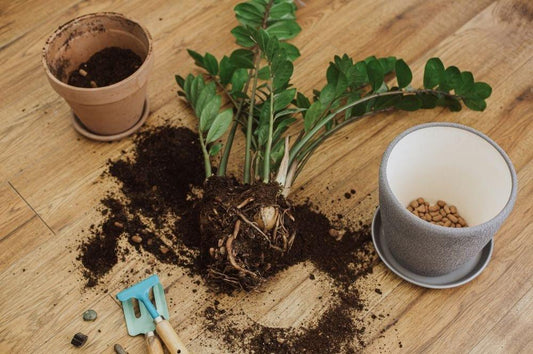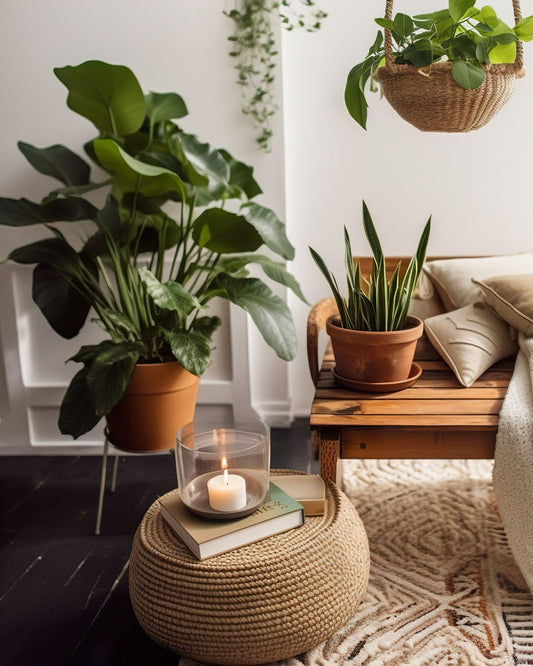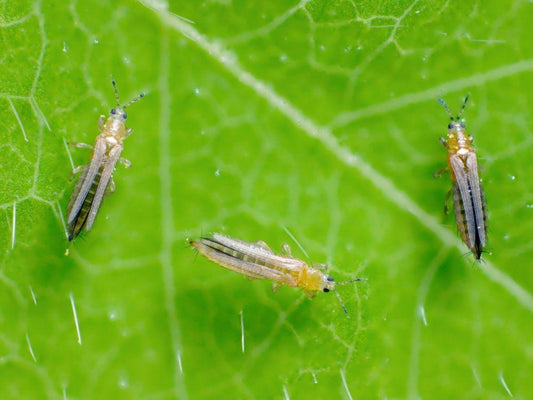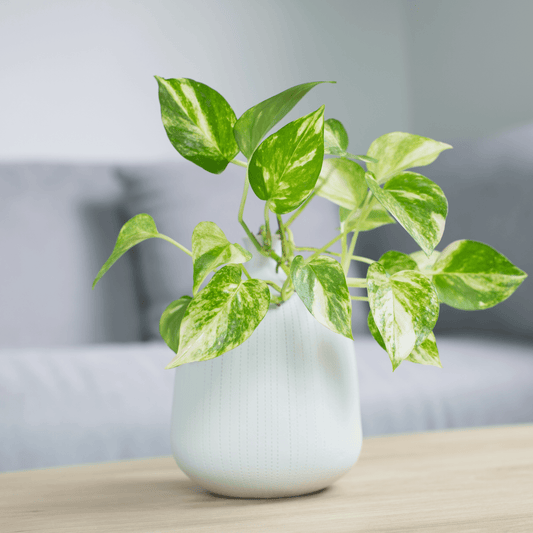Watch the video tutorial on Instagram and YouTube
Want to see how I make the perfect substrate for your tropical plants? Watch my video on Instagram or YouTube, where I show you step by step the process of making the perfect substrate for Monstera and other tropical plants.
Instagram: Follow me on Instagram for videos and more plant care tips.
YouTube: Watch the video on YouTube to discover all the secrets of a perfect substrate!
Or scroll to read the article.
Introduction
When talking about growing tropical plants like Monstera Deliciosa and other tropical plants that are grown indoors, it is essential to use the term "substrate" rather than "potting soil."
The substrate is a mixture that includes the topsoil, but is also composed of inert materials, which improve the physical properties of the soil. Simply using the term "topsoil" is incorrect, since the topsoil is only one of the elements of the substrate, not the sole component.
Inert materials, such as perlite and pine bark, are added to improve drainage, aeration and stability of the substrate.

Inert materials
Inert materials are components that do not easily decompose and do not provide nutrients directly to plants. However, they play a crucial role in managing water and air within the substrate.
Perlite, for example, is a volcanic material that helps improve drainage and aeration of the substrate.

Pine bark, on the other hand, provides structure and helps maintain balanced humidity, avoiding water stagnation.
Causes of death of houseplants
The number one cause of death for container-grown houseplants, many of which originate from tropical environments, is inadequate substrate.
Poorly drained substrate can cause root rot, often accompanied by incorrect watering practices.
When roots rot, plants are no longer able to absorb water and nutrients, leading to disease and plant death.
Why Tropical Plants Are Suitable for Indoor Growing
Tropical plants have become popular for indoor growing around the world for several reasons.
These plants are accustomed to conditions of diffused light, constant temperatures and high humidity, all characteristics that can be easily replicated inside our homes. With this expedient they can also be grown outside the tropical and subtropical places of the planet, where otherwise they could not live, becoming at the same time important elements of decoration for the home.
Additionally, many of these plants are adaptable and can tolerate some variation in growing conditions, making them ideal for home environments and where milder temperatures allow (e.g. in regions such as Sicily, Sardinia and southern Italy) they can be grown outdoors either for much of the year or even all year round.
How to compose the substrate
To create the perfect substrate for your tropical plants, follow this composition:
- Soil for green plants > 50%: I use a universal professional soil for real and flowering plants which includes peat, fertilizer, coconut fiber and pumice
- Bark for Orchids > 25%: must be composed of pine bark and coconut fiber; helps with drainage and aeration, simulating the natural environment of epiphytes.
- Perlite > 25%: inert material of volcanic origin that improves drainage and aeration of the substrate.


For which plants to use this substrate
This substrate is perfect for Monstera Deliciosa, Monstera Adansonii, Monstera Minima and other varieties, but not only.
Monstera is a semi-epiphytic plant, which means that in nature it often grows attached to other plants rather than in the ground. For this reason, it does not need just any potting mix like many other plants. It needs a well-aerated and draining substrate, similar to its natural habitat. Using regular bagged potting mix can suffocate its roots and prevent optimal growth.
Learn more about Monstera deliciosa by reading my dedicated article on this wonderful plant. Here is the link: Monstera deliciosa: the trendiest plant of the moment .
This well-draining, aerated substrate is ideal not only for Monstera Deliciosa and other Monstera varieties, but also for a wide range of other tropical and houseplants, including:
- Philodendrons (Philodendron spp.)
- Epipremnum (Pothos)
- Syngonium
- Calathea and Maranta
- Maranta
- Anthurium
- Alocasia
- Schefflera
- Dieffenbachia
- Ficus elastica and Ficus lyrata
- Hoya
- Peperomia
- Dracaena
- ZZ Plant (Zamioculcas Zamiifolia)
- Spider Plant or Phalange (Chlorophytum Comosum)
- Peace lily (Spathiphyllum)
- Bird of Paradise (Strelitzia Reginae and other varieties)
- Chinese Evergreen (Aglaonema)
- Kentia or Kenzia (Howea Forsteriana)
- Lead Plant (Aspidistra Elatior)
Conclusion
Using the right substrate is essential to the health and growth of your tropical potted plants. Make sure you understand the difference between soil and substrate and use inert materials to improve drainage and aeration. By following these tips, you can create an optimal environment for your tropical plants, ensuring they live long and grow well.
Explore the plants I personally produce in my online shop!
I have selected and curated a wide range of plants to make your green space even more beautiful and healthy. Visit my shop on violaplants.com and find the perfect plant for you. A collection of tropical and houseplants awaits you that I can't wait to share with you.







